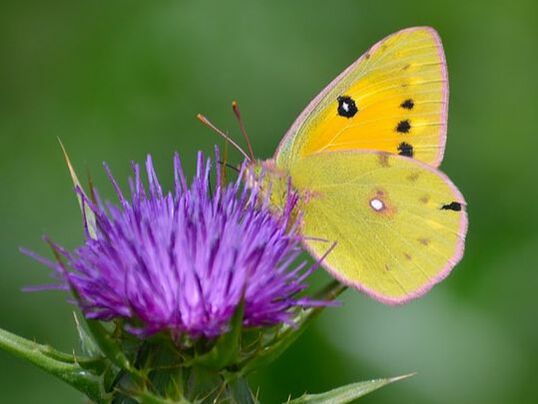Bird's-foot Trefoil
Bird's-foot Trefoil
Bird's-foot Trefoil is the main foodplant of the attractive red and black, day-flying, SIX-SPOT BURNET MOTH.
It is also a favourite of caterpillars of the COMMON BLUE butterfly.
Caterpillars of the GREEN HAIRSTREAK and the migratory CLOUDED YELLOW butterflies also feast on its leaves.
Birds-foot Trefoil is easily choked out by agricultural grasses, so mainly grows in dunes and rough ground round the coast, and on chalk and limestone downs, and other areas that are not too overgrown. Keep the grass in check and you can grow it almost anywhere.
Including butterflies with a more limited geographical range that you might also be able to attract if you live in the same part of the country, it is also a major foodplant of caterpillars of the:
- WOOD WHITE (Ireland & Southern England)
- DINGY SKIPPER (England, mainly coastal in Wales and Scotland, scattered Ireland)
- SILVER-STUDDED BLUE (rare outside southern English heathlands)
As an added bonus, the pretty, yellow, pea-like flowers of Bird's-foot Trefoil are a source of nectar for most adult butterflies. Like clover and other legumes it enriches the soil with nitrogen that it extracts from the air with the help of symbiotic micro-organisms. It's perennial, attractive, easy to grow from seed and multi-functional, so why wait!
INCREASE BIODIVERSITY BY GROWING BIRD'S-FOOT TREFOIL TO SUPPORT THE BUTTERFLIES BELOW
COMMON BLUE
|
GREEN HAIRSTREAK
|
SIX-SPOT BURNET MOTH
|
CLOUDED YELLOW
|




